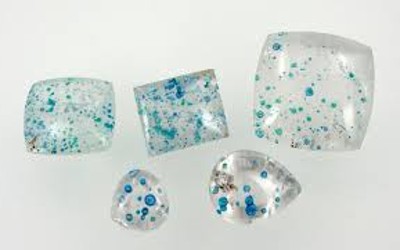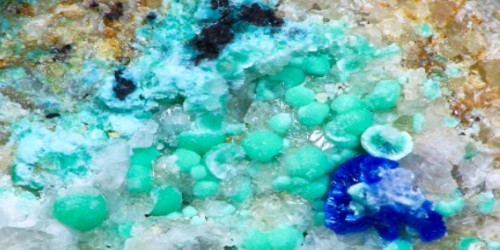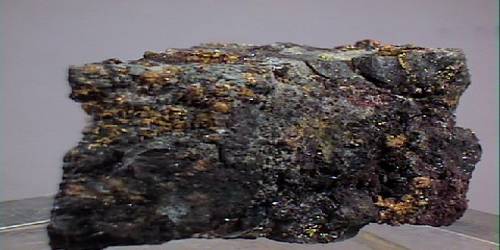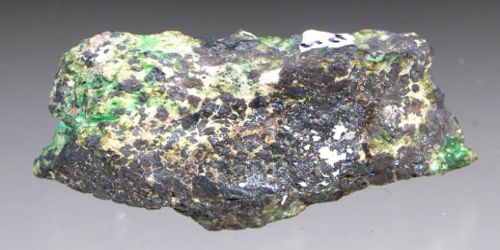Gilalite is a copper silicate mineral with a chemical composition of Cu2Si6O17·7(H2O). It is a monoclinic mineral containing copper, hydrogen, oxygen, and silicon. It was first described for an occurrence in the Christmas porphyry copper mine in Gila County, Arizona in 1980 along with the mineral apachite. It derives its name from this locality.
General Information
- Category: Silicate mineral
- Formula: Cu2Si6O177(H2O)
- Crystal system: Monoclinic
- Formula mass: 884.3 g/mol

Fig: Gilalite
Properties
The color of gilalite varies from chrysocolla-green to pale blue-green. It exhibits a waxy or gummy tenacity and a hardness of 2. Its luster is non-metallic in appearance.
- Color: Blue-green, green
- Crystal habit: Radiating fibrous in spherules
- Tenacity: Waxy or gummy
- Mohs scale hardness: 2
- Luster: Nonmetallic
- Streak: Light green
- Diaphaneity: Translucent
- Specific gravity: 2.72
- Optical properties: Biaxial (-)
Occurrence
Gilalite occurs as a retrograde metamorphic or mesogens mineral, found at the expense of a pro-grade calc-silicate and sulfide assemblage, in tactics, commonly incrusting fractures, and also in filing cracks, or interstices in diopside grains.
It occurs as a retrograde metamorphic phase in a calc-silicate and sulfide skarn deposit. It occurs as fracture fillings and incrustations associated with diopside crystals. It is commonly found in the form of spherules of radial fibers.
It has also been reported from the Goodsprings District, Clark County, Nevada; Juazeiro do Norte, Ceara State, Brazil and a slag area in Lavrion District, Attica, Greece.
Some of the minerals with which gilalite is associated are kinoite, apachite, junitoite, apophyllite, tobermorite, calsite, and clinohedrite.
Information Source:
















